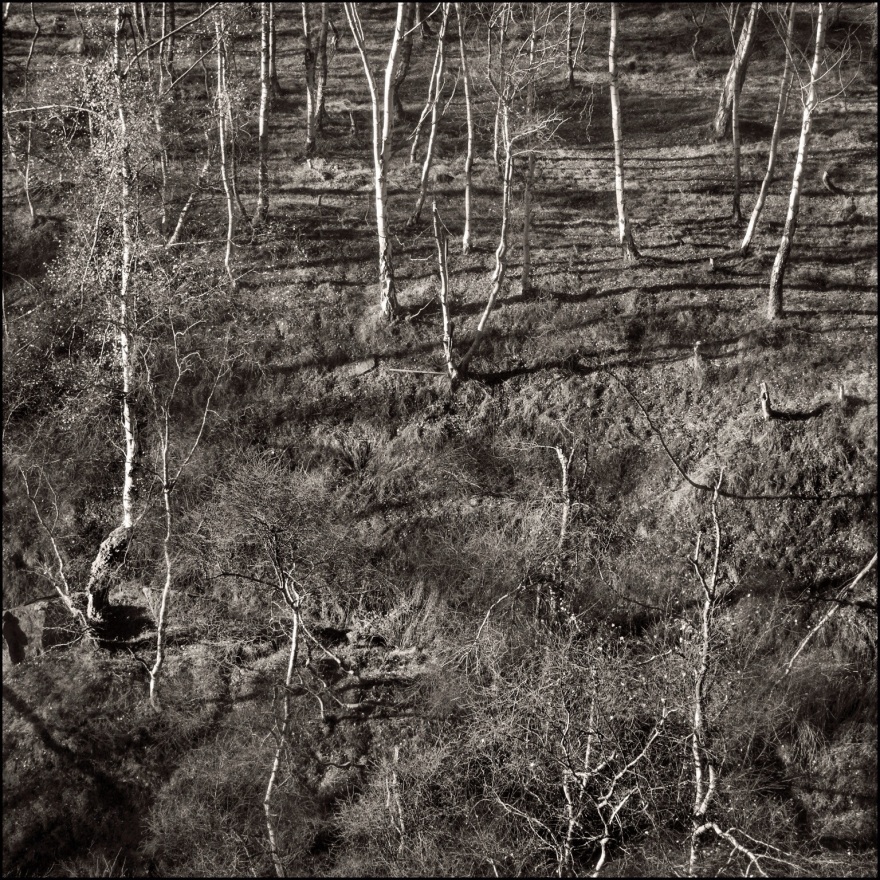Looking at the way in which ideas or themes recur and evolve and can be explored in a range of media and methods. Seeing how a wide range of media and starting points can be linked through a common purpose which is revealed by continuous analysis.
Example 1
 Binary Notion I martin Field 2016
Binary Notion I martin Field 2016
Limitary Patterns : a developing theme.
I first came across the Limitary patterns idea after reading C. Herbert Gilliland (1978) in an internet search. I was looking for connections to Milton’s Paradise Lost. The idea of exploring patterns related to limits and boundaries in a visual form teased my imagination.
I linked this image of fenced maram grass at Blakeney to these words;
Confusion heard his voice, and wild uproar Stood ruled, stood vast infinitude confined,…
None can love freedom heartily, but good men; the rest love not freedom, but licence.
John Milton
The motive behind the original photograph was the pattern, tone and texture of fence and grass. The text suggests wild and infinite nature tamed and held back; also mans’ wild and natural urges similarly tempered. The grass would (metaphorically) seek ‘licence’.
MARAM PICKET BLAKENEY : LIMITARY PATTERNS Martin Field 2012
I montaged the same image later in a piece for the Paradise Lost series

EXPULSION : THE FIRST MORNING OF OUR WORLD martin Field 2012
Part of a pastel drawing from 1990 ‘Natural History’ reminded me of the picket fence and this then became a recurring motif in the work that followed.

Natural History Martin Field 1990
It (the fence motif) is evident in a piece from 2014 ‘A Natural History’ the fence marks are made laterally across two canvasses which were designed to link on both edges giving two configurations for display. The edges of the work and the meeting of the parts of the image becomes another limit and relates to repeating patterns.

A Natural History Martin Field 2014
This idea was expanded in another piece from 2014 ‘Hidden Repeats’. The motif is taken directly from the pastel drawing, digitised, printed and embedded into the mixed media.
The other part of this image and more detail of the way in which this piece repeats can be seen at https://martinrfield.wordpress.com/2014/10/23/hidden-repeats/

Hidden Repeats part 2 Martin Field 2014
Binary Impulse: The fence motif re appears in this piece. The other shapes begin to represent flags and banners. These are symbols of allegiance and by implication separatism. They are also usually covered in pattern. Given the major political events of the time (Summer 2016) this is perhaps about choosing sides. The referendum was a binary decision and prompted the use of the term.

Binary Impulse Martin Field 2016
The next development is a return to the double linked canvas. Two 1m square canvasses link on both outside edges giving two configurations for display. Hessian scrim becomes a floating and distressed barrier across the piece. There are only two outcomes of a binary decision. No regret, no status quo.


This image was then digitised with further elements added. the new shapes are patterns for mens’ suits and the other element is the fence from the original photograph from Blakeney. The ‘men’ are neither in front of, or behind the fence. Nor can they sit on the fence. This piece is purely digital. The enhancement possible using digital montage methods added vibrant colours and complexity. This prompted further iterations of the new pattern motifs.

Untitled Martin Field 2016
The photoshop work which used photos of the painting with found patterns for mens’ suits was the printed out at the correct scale (to collage) using tiled A4 sheets and layered into the acrylic medium. Blending colours added with paint and crayon helped merge the added material even more. The final piece is a result of several cycles of imagery being reused, layered and sampled.

Binary Notion I martin Field 2016
SUMMARY
To begin with the idea was connected to Paradise Lost which deals with Heaven, Hell, Eden and Earth. A vast range of choices seemingly reduced to good or bad with the edges of those two opposites cleverly blurred. Since then I have found connections to the landscape, to composition and to recent momentous political events. We seem to exist in a binary paradox. Can all things be seen in the context of limitary patterns?
Example 2:
After Quarry Copse III
Another recurring motif and more work across different media and practice.

After Quarry Copse III Acrylic paint on canvas Martin Field 2015
(Since overpainted -see https://martinrfield.wordpress.com/2017/11/17/white-lines-fracture/ November 2017)

Quarry Copse III
Below is my image followed by those of Adams and Klimt.

Derwent Birches 2010
Aspen, North Rim, Grand Canyon National Park, Arizona”,
1948 gelatin silver print
Ansel Adams (1902-1984)
The theme is also apparent in my iPad drawing.
The ‘Woodland Rise’ drawings explore the idea of a flat ground with trees in depth as do the ‘Early in Late Autumn’ drawings.
I often pursue the idea or theme that is current in my mind by using any and every method and medium.
Golden Glade 2014
Acrylic and mixed media with added organic material.
20″ x 20″ (51cmsq)





You must be logged in to post a comment.